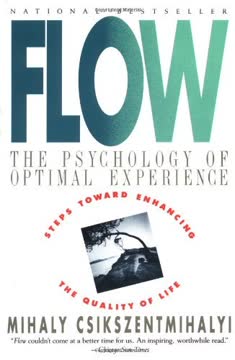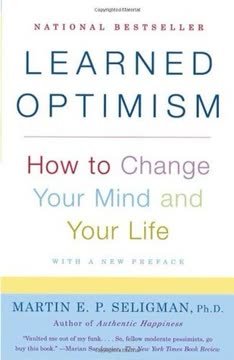重点摘要
1. 乐观是一种可以改变生活并改善心理健康的习得技能
乐观者和悲观者同样会遭遇生活中的挫折和悲剧,但乐观者能更好地应对这些挑战。
乐观是可塑的。 虽然有些人天生更乐观,但这种技能可以通过有意识的努力和练习来培养。这种习得的乐观对心理健康、韧性和整体生活满意度有深远的影响。
乐观的好处:
- 更好地从挫折和悲剧中恢复
- 改善心理健康,降低抑郁风险
- 增强身体健康,可能延长寿命
- 在工作、学校和体育方面取得更大成就
- 更有效的领导力和人际关系
学习乐观包括识别消极思维模式,挑战悲观信念,并发展更具建设性的事件解释方式。通过掌握这些技能,个人可以显著提高生活质量和应对逆境的能力。
2. 解释风格决定我们对逆境的反应并塑造我们的韧性
悲观者的一个显著特征是,他们倾向于认为坏事会持续很长时间,会破坏他们所做的一切,并且是他们自己的错。
解释风格至关重要。 我们如何解释事件的原因,特别是负面事件的原因,深刻影响我们的情绪反应和后续行动。这种习惯性的思维方式被称为解释风格。
解释风格的关键维度:
- 永久性:原因是暂时的还是持久的
- 普遍性:原因影响特定领域还是生活的各个方面
- 个人化:原因归因于自己还是外部因素
乐观者倾向于将负面事件视为暂时的、特定的和外部的,而悲观者则将其视为永久的、普遍的和个人的。这种视角的差异显著影响韧性,乐观者能更快地从挫折中恢复,并对未来结果保持更积极的展望。
3. 习得性无助导致抑郁,但可以被逆转
习得性无助是一种放弃反应,是在相信无论你做什么都无关紧要之后的放弃反应。
无助滋生抑郁。 当个人反复经历他们的行动似乎对结果没有影响的情况时,他们可能会发展出习得性无助。这种感知到的无力状态可能导致抑郁和其他心理健康问题。
习得性无助的特征:
- 在逆境面前的被动性
- 难以采取行动改善自己的处境
- 持续的负面信念,认为自己无法影响结果
重要的是,习得性无助并不是一种永久状态。通过有针对性的干预和认知重建,个人可以克服这种心态,发展出更强的个人效能感。这种“逆转”无助的过程是治疗抑郁和培养韧性的关键组成部分。
4. 认知疗法通过改变思维模式有效治疗抑郁
消除负面情绪并不会产生积极情绪。用术语来说,悲伤和快乐之间的相关性远不是-1.00,更像是-0.40。
思维驱动情绪。 由亚伦·贝克等人开发的认知疗法基于这样一个原则:我们的思维和信念显著影响我们的情绪状态和行为。通过识别和修改负面思维模式,个人可以缓解抑郁和其他心理健康问题的症状。
认知疗法的关键组成部分:
- 识别自动的负面思维
- 用证据挑战扭曲的信念
- 发展更平衡和现实的思维模式
- 在日常生活中练习新的认知技能
研究表明,认知疗法在治疗抑郁方面与药物一样有效,并且具有提供长期技能的额外好处,可以预防未来的复发。这种方法强调了思维对情绪健康的影响,并展示了改变思维方式可以深刻影响我们的感受。
5. 乐观在教育、体育和工作场所中提升表现
传统的成就观念,如同传统的抑郁观念,需要彻底改革。
乐观促进成功。 在各个领域,从学术成就到体育表现和职业发展,乐观的人往往比悲观的人表现更好。这种成功不仅仅是才华或努力的结果,而是源于乐观带来的坚持和韧性。
乐观提升表现的方式:
- 在面对挑战时增加动机和努力
- 更好地从挫折中恢复
- 增强问题解决和创造性思维
- 改善人际关系和领导技能
- 更愿意承担有计算的风险
在教育环境中,乐观的学生往往成绩更高,并坚持学习。在体育中,乐观的运动员表现出更大的韧性,并在压力下表现更好。在工作场所,乐观的员工更有生产力、适应性强,并且更有可能在职业生涯中取得进步。培养乐观文化的组织往往更具创新性和成功。
6. 儿童的乐观由父母影响和生活经历塑造
儿童的天线始终调谐到父母,特别是母亲,如何谈论情感事件的原因。
早期经历很重要。 儿童的解释风格受到环境的显著影响,特别是父母解释和反应事件的方式。这种早期基础对儿童的前景和韧性有长期影响。
影响儿童乐观的因素:
- 父母的解释风格,尤其是母亲的
- 成人的批评和反馈
- 重大生活事件及其框架
- 学校经历和同伴互动
父母和看护者可以通过示范积极的解释风格、提供建设性的反馈,并帮助儿童以更平衡的方式解释事件来培养儿童的乐观。此外,教导儿童挑战负面思维和培养韧性的技能,可以为他们在整个生活中提供更好的心理健康和成就。
7. 灵活的乐观允许在不同情况下进行平衡思考
灵活的乐观是。他们旨在增加你对逆境思考方式的控制。
平衡是关键。 虽然乐观通常会带来更好的结果,但在某些情况下,更悲观或现实的态度可能更有益。灵活的乐观涉及根据情况的需求调整自己的思维方式。
需要不同思维方式的情况:
- 乐观:设定目标、激励、克服障碍
- 现实:风险评估、安全关键决策
- 轻度悲观:应急计划、避免自满
发展灵活的乐观需要认识到何时不同的思维方式最为合适,并能够根据需要在它们之间切换。这种技能使个人能够利用乐观的好处,同时在需要谨慎或批判性分析的情况下保持脚踏实地的视角。
8. 抑郁的流行反映了社会变化和个人控制
我们正处于抑郁流行的中期,其后果通过自杀夺走了与艾滋病流行一样多的生命,并且更为普遍。
社会塑造心理健康。 过去一个世纪抑郁率的显著增加反映了社会结构、价值观和期望的重大变化。虽然对个人成就和个人控制的强调在许多方面是赋权的,但也创造了新的压力和脆弱性。
导致抑郁流行的因素:
- 对个人成功和自我价值的关注增加
- 传统支持结构(家庭、社区、宗教)的削弱
- 上升的期望和社会比较
- 信息过载和持续的连接
- 身体活动减少和与自然的联系减少
理解这些社会影响有助于在个人和社区层面开发更全面的心理健康方法。这也突显了在个人抱负与社会联系和现实期望之间取得平衡的必要性。
9. 争论技巧可以帮助克服悲观的思维模式
争论在长期内更有效,因为成功争论的信念在相同情况再次出现时不太可能复发。
挑战消极思维。 争论是认知疗法和习得乐观的关键技能。它涉及积极质疑和挑战悲观信念,而不是接受它们为真理。
四种主要的争论技巧:
- 证据:检查与消极信念相矛盾的事实
- 替代:考虑事件的其他可能解释
- 影响:评估信念的现实世界后果
- 有用性:评估持有该信念是否有益
通过定期练习这些争论技巧,个人可以逐渐将他们的解释风格转向更乐观的模式。这不仅有助于管理当前的挑战,还能为未来的逆境建立韧性。
10. 组织可以利用乐观来提高生产力和成功
一个充满乐观个体的组织——或在关键岗位上布满乐观个体的组织——具有优势。
乐观推动组织成功。 了解并培养员工乐观的公司可以获得显著的竞争优势。这不仅仅是雇佣乐观的人,而是创建一个培养和维持乐观思维的文化。
在组织中利用乐观的策略:
- 选择乐观的人担任关键角色,尤其是在高压岗位上
- 培训员工乐观技能和认知技巧
- 创建鼓励韧性和积极思维的工作环境
- 实施示范和强化乐观方法的领导实践
- 在决策过程中平衡乐观与现实
通过整合这些策略,组织可以改善员工的福祉,提高生产力,增强创新能力,并建立更具韧性的团队,能够应对挑战并抓住机遇。
最后更新日期:
FAQ
What's Learned Optimism about?
- Focus on Optimism: Learned Optimism by Martin E.P. Seligman explores how individuals can shift their mindset from pessimism to optimism, significantly improving mental health and life satisfaction.
- Learned Helplessness Theory: The book introduces learned helplessness, a condition where individuals feel powerless to change their circumstances, often leading to depression.
- Practical Techniques: Seligman provides practical methods for developing an optimistic explanatory style, helping individuals cope better with adversity and achieve greater success.
Why should I read Learned Optimism?
- Transformative Insights: The book offers valuable insights into how thought patterns affect emotional health and quality of life, encouraging self-reflection and personal growth.
- Evidence-Based Techniques: It presents scientifically validated methods for changing explanatory styles, applicable in both personal and professional contexts.
- Addressing Depression: With rising depression rates, Seligman’s strategies are relevant for combating helplessness and fostering a positive outlook.
What are the key takeaways of Learned Optimism?
- Explanatory Style Matters: How you explain events—whether as permanent, pervasive, and personal or temporary, specific, and external—affects your mental health.
- Learned Helplessness: Understanding learned helplessness is crucial for breaking the cycle of depression and fostering resilience.
- Cognitive Therapy: Seligman highlights cognitive therapy as effective for changing pessimistic thought patterns and improving emotional well-being.
What is learned helplessness, as defined in Learned Optimism?
- Definition of Learned Helplessness: It is a psychological condition where individuals believe their actions do not influence outcomes, leading to a sense of powerlessness.
- Impact on Behavior: This condition often results in passivity and lack of motivation, contributing to a downward spiral of depression.
- Reversibility: Seligman emphasizes that learned helplessness can be unlearned by adopting an optimistic explanatory style.
How does Seligman suggest changing from pessimism to optimism in Learned Optimism?
- Cognitive Skills Training: Seligman outlines cognitive skills to shift explanatory styles from pessimistic to optimistic by recognizing and disputing negative thoughts.
- Reattribution Techniques: The book encourages reattributing failures to temporary and specific causes, reducing feelings of helplessness.
- Practice and Persistence: Consistent practice and effort are required, with exercises and examples provided to develop a more optimistic outlook.
What role does explanatory style play in mental health according to Learned Optimism?
- Influence on Depression: Explanatory style affects responses to setbacks; a pessimistic style is linked to higher depression rates, while an optimistic style fosters resilience.
- Cognitive Patterns: How individuals explain events shapes their emotional responses, either exacerbating or alleviating feelings of helplessness.
- Long-Term Effects: Seligman’s research shows that explanatory style can have lasting effects on mental health, with optimism leading to better well-being.
What is the ABCDE model in Learned Optimism?
- ABC Framework: The model stands for Adversity, Belief, Consequence, Disputation, and Energization, helping individuals understand how beliefs about adversity influence emotions.
- Disputation Techniques: It encourages disputing negative beliefs by examining evidence, considering alternatives, and evaluating usefulness.
- Energization: The final step involves the positive feelings and motivation that arise after successfully disputing negative beliefs.
How can parents influence their children's optimism according to Learned Optimism?
- Modeling Behavior: Parents shape children’s explanatory styles by modeling optimistic thinking and reactions to challenges.
- Feedback and Criticism: The type of feedback children receive can reinforce optimistic or pessimistic styles; temporary and specific feedback fosters resilience.
- Encouraging Resilience: Teaching children to view setbacks as temporary and specific helps develop a more optimistic outlook.
What are some practical techniques for developing optimism from Learned Optimism?
- Cognitive Restructuring: Identify and dispute negative thoughts using the ABCDE model, challenging the permanence and pervasiveness of negative beliefs.
- Positive Self-Talk: Encourage replacing self-critical thoughts with affirming and constructive ones to shift perspectives.
- Goal Setting: Focus on small successes to foster a sense of accomplishment and reinforce an optimistic outlook.
How does cognitive therapy relate to learned optimism in Learned Optimism?
- Cognitive Restructuring: Cognitive therapy aligns with learned optimism by changing negative thought patterns to develop a more optimistic explanatory style.
- Empirical Evidence: Studies show cognitive therapy reduces depression symptoms by fostering optimism, empowering individuals to control thoughts and emotions.
- Long-Term Benefits: Skills learned through cognitive therapy help maintain an optimistic outlook, crucial for mental health and well-being.
What are the implications of optimism for success at work according to Learned Optimism?
- Optimism and Performance: Optimistic individuals tend to perform better in their careers, persisting in the face of challenges.
- Sales and Persistence: In sales, optimism is valuable; optimistic salespeople are more likely to continue seeking clients despite rejection.
- Organizational Impact: Organizations fostering optimism benefit from increased employee engagement, productivity, and morale.
What are the best quotes from Learned Optimism and what do they mean?
- Self-Forgiveness and Resilience: “The best thing to do is cut my losses, let myself off the hook for making a minor mistake, and continue dieting as strictly as I have been for the last two weeks.” This emphasizes resilience and not letting minor setbacks derail progress.
- Proactive Conflict Resolution: “I can always clear up misunderstandings.” This reflects the belief that challenges can be resolved, promoting proactive conflict management.
- Learned Skill: “Optimism is not something you know about intuitively.” This highlights that optimism is a skill to be developed, encouraging active work on mindset.
评论
《习得性乐观》大多获得了积极的评价,因其科学方法培养乐观态度而备受赞誉。读者们欣赏塞利格曼基于研究的见解,帮助他们对抗悲观和抑郁。许多人认为书中的策略实用且有效,有助于改善他们的心态。一些人批评书的篇幅过长和内容重复,特别是在后面的章节中。作者对灵活乐观的强调以及对悲观偶尔价值的认可也被突出。总体而言,尽管存在一些结构上的缺陷,评论者们仍认为这是一本理解和培养乐观态度的宝贵资源。
Similar Books

















